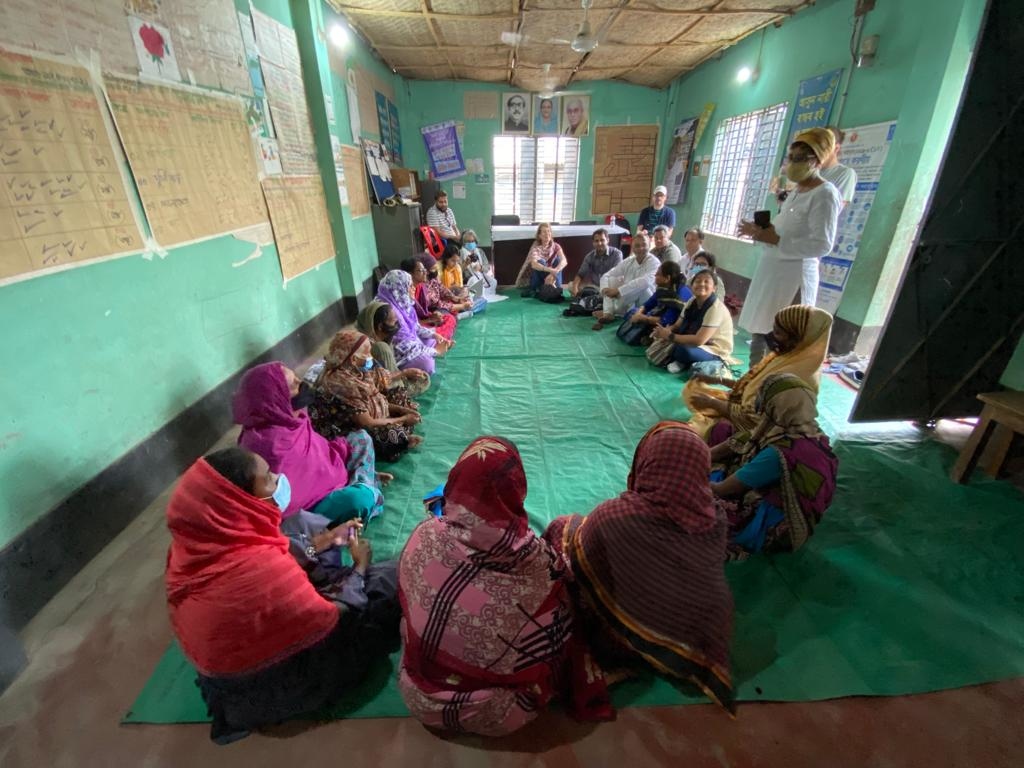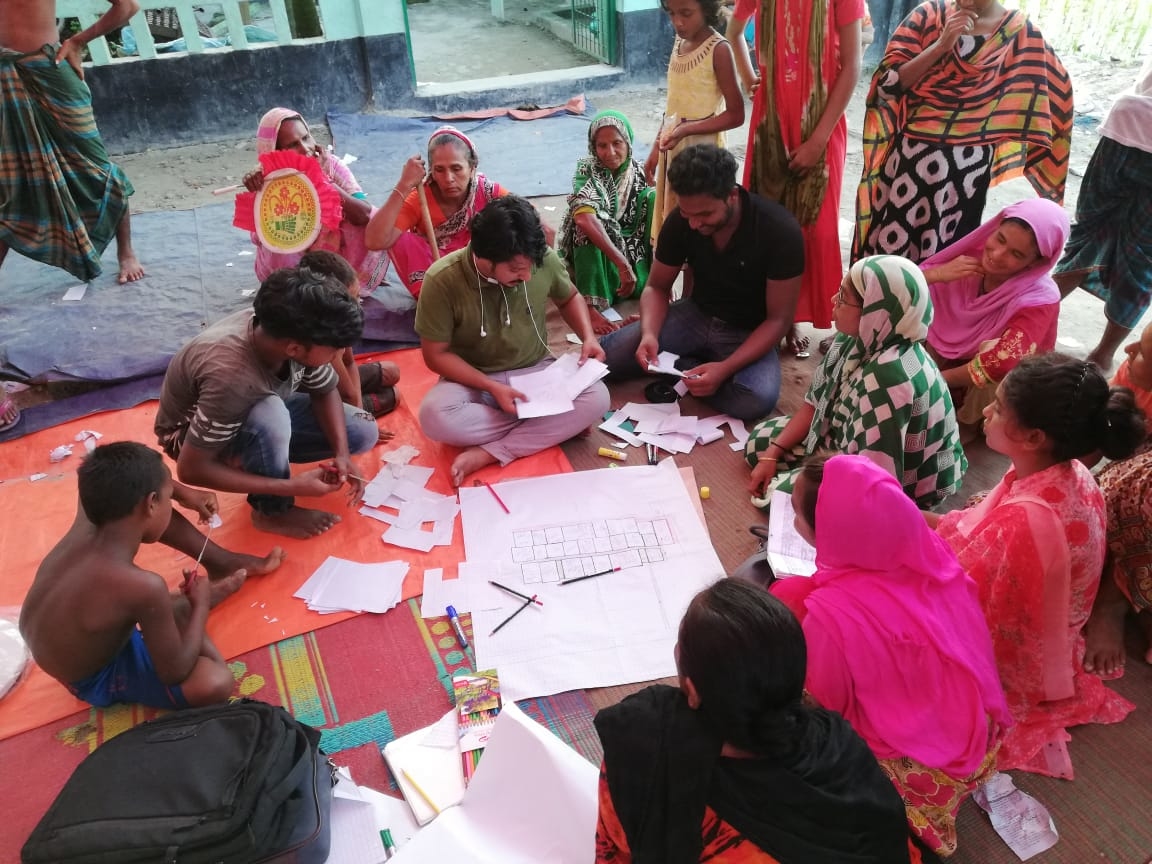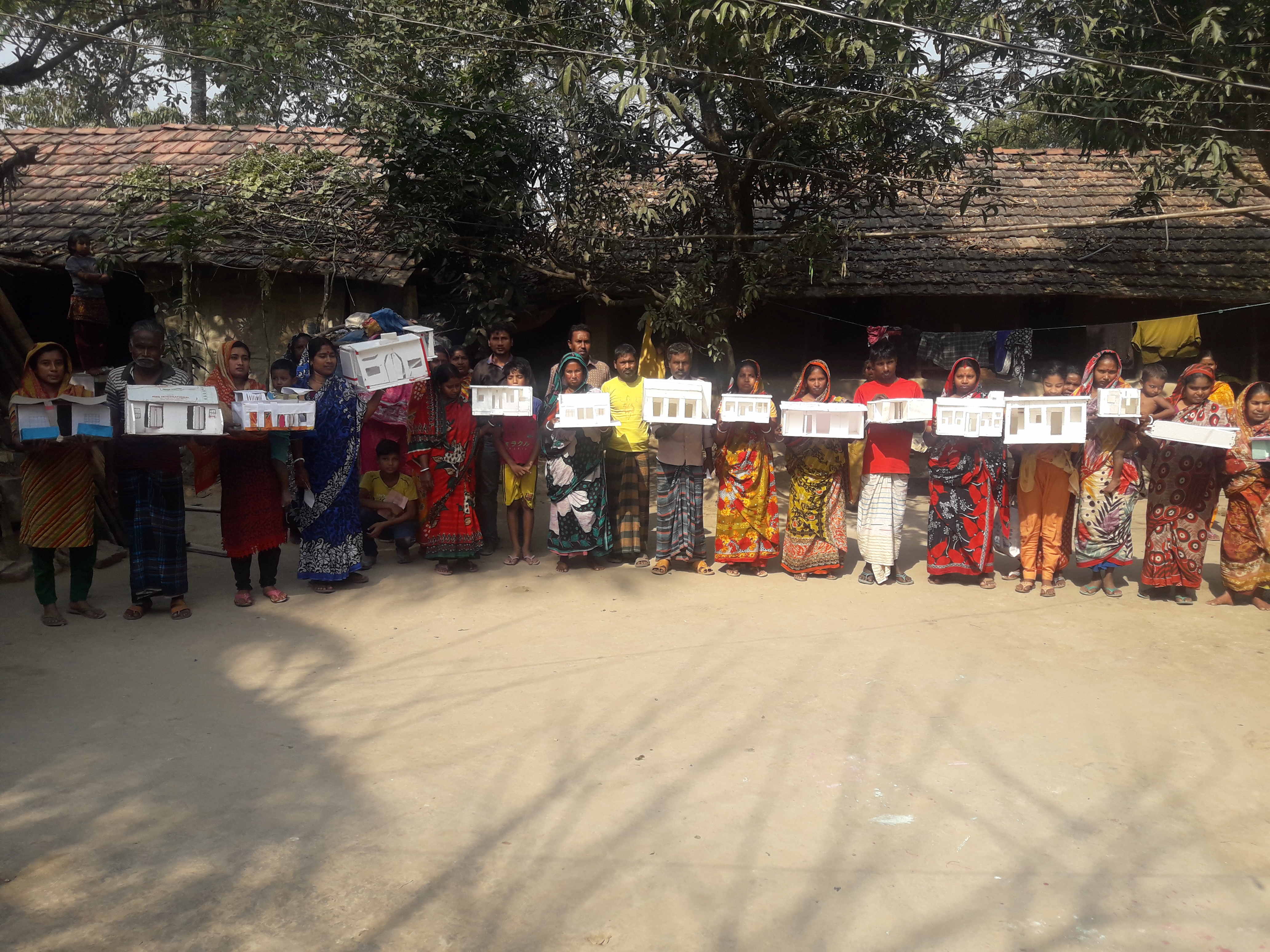Women leaders galvanizing communities into climate resilient action in Bangladesh
Devolve decision making
Address structural inequalities
Invest in local capabilities
Build understanding
Flexible programming and learning
Organization: COMMUNITY DEVELOPMENT FEDERATION (CDF)
Donor: FUNDING SHARED BY LOCAL GOVERNMENT AND NGOS (BRAC, UNDP)
Beneficiaries: 28,000
In informal settlements in the cities of Khulna, Satkhira, Barisal, Rangpur, Rajshahi and Chattogram in Bangladesh, women leaders are helping local people to map the problems they face and plan climate resilient solutions together.
Climate change is rapidly accelerating rural to urban migration across Bangladesh. With their homelands ever more at risk from climate-induced disasters, many economically disadvantaged people arrive in large cities in search of a better, safer life. Unfortunately, this form of adaptation strategy of moving to cities presents an array of both new and familiar challenges to the migrants.
The problems that residents of informal settlements experience are often inadvertently exacerbated by local authorities, whose ideas to upgrade informal settlements are not always successful in reflecting the needs of local people. To address the twin challenges of climate-related problems in the slums and ineffective solutions to address them, Khulna-based NGO Community Development Federation (CDF) launched an intervention called ‘climate-induced action planning’, which draws on the power of local women and skilled community facilitators to bring about change.

Community adaptation planning is a participatory planning exercise, led by women to identify the climate risks and vulnerabilities of the community, design and implement collaborative solutions to adapt to the challenges, using local knowledge and limited resources. By planning in this way, the aim is to help low-income communities to reduce the impacts of climate change on their lives and livelihoods.
"The Women-led Climate Induced Community Action Plan ensures community participation in decision making by organizing consultation and several planning workshops at community level,” says Md Saydur Rahman, Community Architect and Facilitator at CDF. “Thus, the action plan includes the experiences and adaptation techniques to diverse climate vulnerabilities for preparing an adaptive action plan to tackle the impact of climate change in urban low-income communities."
The community planning process consists of a number of stages. It starts by forming Primary Groups (PG), which are made up of female volunteers drawn from each household in the community. The PGs eventually expands into women-led Community Development Organizations (CDO) of around 25 to 30 people, including representatives from different demographic groups – from men, young people and old people, to people with disabilities, indigenous communities and other minorities. These CDOs then conduct regular sessions led by women in which members examine community problems, categorize them and rank them according to the severity.

The next stage is the development of a Community Action Plan (CAP), which lists the necessary actions and responsible authorities for the execution of the plan. This is followed by producing a social map, with solutions arrived to through a workshop in which solutions are identified and voted on. The plan is then presented during a meeting with development stakeholders to present the process. Finally, based on affordability and possibility of funding, a detailed cluster map is prepared that identifies what is going to be implemented and priorities.
The whole process takes a week, and the concerns and priorities of all the groups are treated and addressed equally in the CAP. The plan becomes the guiding document for the community and updated on a yearly basis to reflect changing priorities. In addition, CDO members also engage in monitoring and evaluating progress made and challenges faced.
“What we are facing here is an intensive climate change. And it has many negative impacts. The river Padma flows by our community. Disasters like floods and river erosion are common here. Storms and excessive rainfall are also frequent,” explains Mishu, a resident in an informal settlement of Borokuthipara in Rajshahi. “To mitigate the impacts, we have made a map by ourselves. So if our problems are ever to be solved by an institution like BRAC, City Corporation or CDO, they can use the information we have delineated on the map."
The mapping is helping to build long-term resilience to climate change. “Even a light downpour causes water logging here,” adds Mishu. “We have listed down all such issues. All such information will guide contributing institutions in the right direction. As we didn’t have such a map before, measures taken by City Corporation, and different private institutions are often in vain. Now this map will fill the gap between their effort and our need."

In the informal settlement of Khalishpur, Khulna, there are 5,000 direct beneficiaries of the intervention, and CAP has already being replicated in low-income communities in the six Bangladeshi cities of Khulna, Satkhira, Barisal, Rangpur, Rajshahi, and Chattogram, with a total of approximately 28,000 direct beneficiaries. In Khulna, 32 informal settlements have prepared and implemented their CAP, reducing their vulnerability to climate-related challenges.
The use of CAPs has attracted the support of local government and NGOs. This is reflected in the decision to fund a large part of the implementation of the CAP, and in some cases, to include in the city’s own disaster resilience strategy.